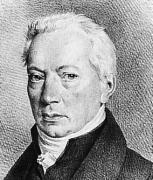Adalbert Gyrowetz facts for kids
Vojtěch Matyáš Jírovec (also known as Adalbert Gyrowetz) (born February 20, 1763 – died March 19, 1850) was a famous Bohemian composer. He wrote many different kinds of music. He was especially known for his instrumental pieces, like string quartets and symphonies. He also composed over 30 operas and singspiele (German operas with spoken dialogue). Some of his well-known stage works include Semiramide (1791) and Der Augenarzt (1811).
Contents
Biography
Gyrowetz was born on February 20, 1763, in České Budějovice, a city in Bohemia. His father was the choirmaster at the local cathedral. Adalbert first learned music from his father.
Later, he moved to Prague to study law. However, he kept learning and practicing music. Around this time, he worked for Count Franz von Fünfkirchen in Brno. All of the Count's employees were musicians. Here, Gyrowetz started writing music, including symphonies. He would eventually compose more than 60 symphonies in his lifetime.
In 1785, Gyrowetz moved to Vienna. There, he met the famous composer Wolfgang Amadeus Mozart. Mozart even performed one of Gyrowetz's symphonies that same year.
From 1786 to about 1793, Gyrowetz traveled across Europe. He spent time in Paris. While there, he proved that some symphonies published as Joseph Haydn's work were actually his own. He also lived in Italy for three years. In Italy, he met the writer Johann Wolfgang von Goethe in Rome. He also studied music with Nicola Sala in Naples.
In 1791, he met Haydn in London. Gyrowetz greatly admired Haydn. While in London, a concert organizer named Johann Peter Salomon asked Gyrowetz to write symphonies. These symphonies were played at Salomon's popular concerts.
Gyrowetz later moved back to Vienna. In 1804, he became the Vice-Kapellmeister (a senior music director) at the Court Theatre. He was a very important part of Vienna's music scene for many years. He even helped arrange music for Rossini's opera Zelmira in 1822. In 1827, Gyrowetz was one of the people who carried Ludwig van Beethoven's coffin at his funeral. Gyrowetz passed away on March 19, 1850, in Vienna.
Selected Works
Gyrowetz wrote a huge amount of music during his life. Here are some examples of his many compositions:
Operas
(All composed in Vienna unless noted otherwise)
Symphonies
He wrote more than 60 symphonies, including:
- Symphony in E-flat major, Op. 0, No. 1
- Symphony in B-flat major, Op. 0, No. 2
- Symphony in D major, Op. 0, No. 3
- Symphony in E-flat major, Op. 6, No. 2, 'Jupiter'
- Symphony in F major, Op. 6, No. 3
- Symphony in E-flat major, Op. 8, 'Great'
String Quartets
He composed about 60 string quartets, including:
- Three String Quartets, Op. 1a: C major, G major, B-flat major
- Six String Quartets, Op. 2
- Three String Quartets, Op. 3: D major, G major, E-flat major
- Three String Quartets, Op. 13: D major, C major, E-flat major
Piano Sonatas with Violin and Violoncello
He wrote 40 piano sonatas with violin and cello accompaniment, including:
- Three Piano Trios, Op. 10: A major, B-flat major, E-flat major
- Three Piano Trios, Op. 14: C major, F major, D major
- Three Piano Trios, Op. 15
- Three Piano Trios, Op. 18: G major, B-flat major, E-flat major
Nocturnes
He also wrote 12 nocturnes (night pieces) for piano with violin and cello.
- Nocturne for Piano, Op. 21 in D major (1797)
- Nocturne in B-flat major (No. 4)
Other Chamber Music
- Six Flute Trios, Op. 4
- Adagio for Oboe and Orchestra, Op. 9
- Three Flute Quartets, Op. 11 (1795)
- Piano Concerto in F, Op. 26 (1796)
- Flute Quintet in E minor, Op. 39 (1800)
- Grand Trio Concertante in E-flat major for Clarinet, Cello and Piano, Op. 43
- Piano Concerto in B flat, Op. 49 (1800)
Recordings
You can still listen to Gyrowetz's music today. Here are some recordings:
- Symphony In E-flat Major and F Major, Op. 6 Nº. 2 and 3
- Three Flute Quartets. Op. 11. Nº 1, 2 and 3
- Three String Quartets. Op. 29 Nº. 2; Op. 13 Nº. 1; Op. 29 Nº. 1 (2013)
- Three String Quartets. Op. 44
See also
 In Spanish: Vojtěch Jírovec para niños
In Spanish: Vojtěch Jírovec para niños


